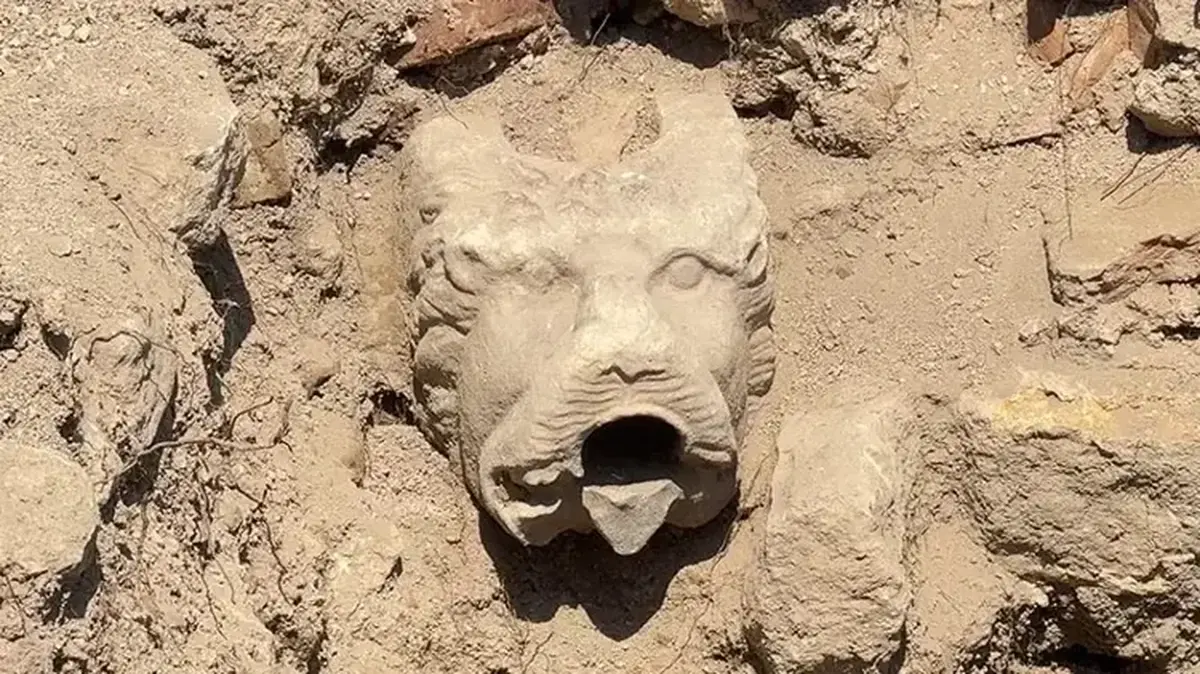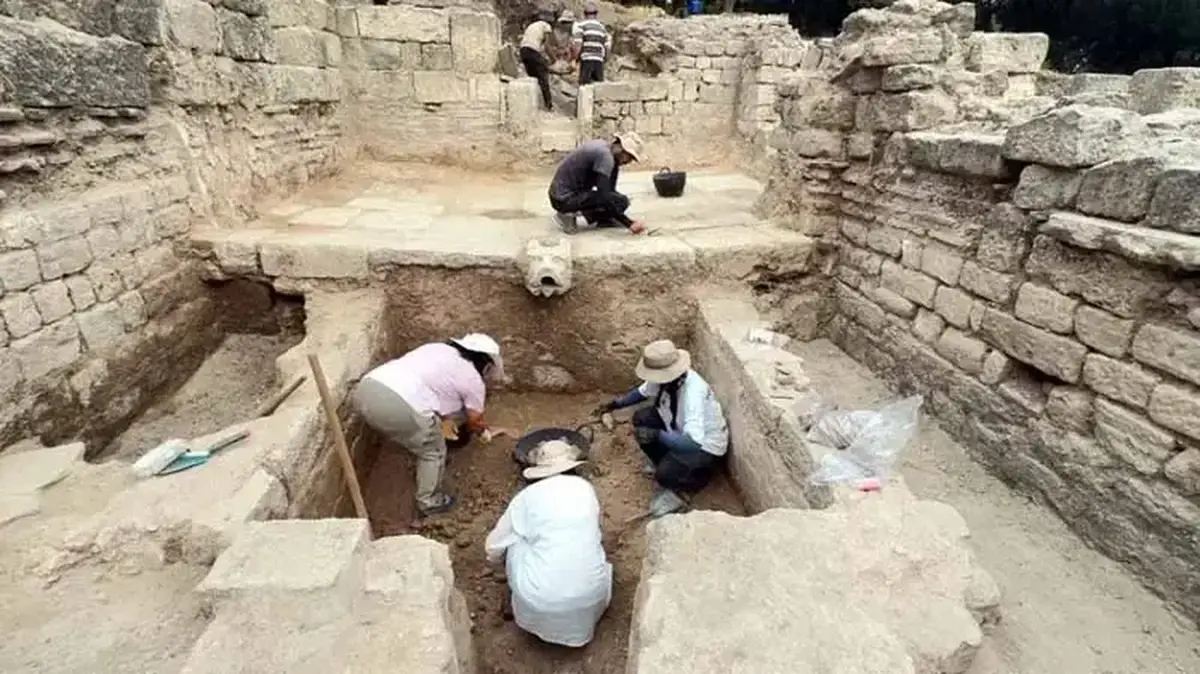 Among the ruins of the ancient Greek port of Batonea, located about 20 kilometers west of , archaeologists have uncovered a stone spout shaped like a lion’s head. This had been preserved for centuries in a late antique workshop dedicated to the production of olive oil and wine. Liquid would flow through the open mouth of the lion into a fermentation basin, as reported by Arkeonews.
Among the ruins of the ancient Greek port of Batonea, located about 20 kilometers west of , archaeologists have uncovered a stone spout shaped like a lion’s head. This had been preserved for centuries in a late antique workshop dedicated to the production of olive oil and wine. Liquid would flow through the open mouth of the lion into a fermentation basin, as reported by Arkeonews.
Beautiful and Functional
The lion’s head combines the functionality of industrial architecture with artistic craftsmanship, noted archaeologists from Kocaeli University, who conducted the excavations in Batonea under the leadership of Professor Şengül Aydıngün.
The team discovered a large complex for wine and olive oil production on the Thracian coast of the Sea of Marmara, where pressing platforms, storage tanks, and warehouses have been preserved. Researchers observed numerous fragments of amphorae and glass bowls on-site. These findings helped scientists paint a vivid picture of a distant past that intertwined agricultural production, trade, and ritual practices.
The spout in the shape of a lion’s head, from which wine or olive oil flowed, represented both the aesthetic and practical core of this complex.

Lion heads were quite common in ancient architecture, appearing in places like the Parthenon and Pompeii. However, the head found in Batonea is particularly noteworthy because it was part of a production facility.
In the art of the ancient Greeks and Romans, the lion symbolized strength, divine protection, and royal authority. In later Christian and Byzantine contexts, it came to represent life force, resurrection, and solar energy. The presence of a lion in the production area of Batonea suggests that the processes of oil pressing or wine fermentation may have had ritual connotations associated with abundance and divine grace.
The discovery by Turkish archaeologists supports the idea that coastal Thrace and the Marmara Sea region continued to actively produce and well into late antiquity. These products were not only a source of livelihood for the local population but also commodities for international trade linked to maritime networks.
The excavations were part of the “Heritage for the Future” project initiated by the Turkish Ministry of Culture and Tourism.
